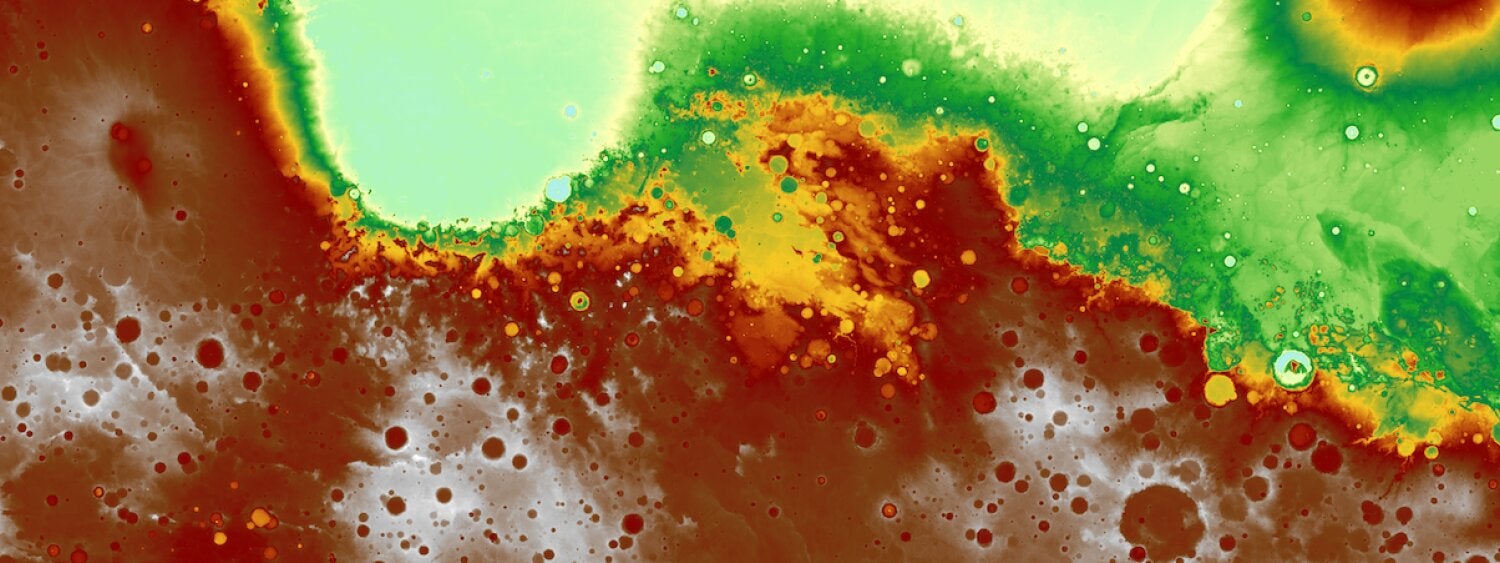Mars may once have had a relatively warm and wet climate conducive to flowing water, rain and snow, producing a terrain much different than the frigid wasteland we know today.
A new study published on Monday in the Journal of Geophysical Research depicts a Red Planet where rivers rushed down valleys to feed hundreds of lakes.
There is evidence that at least some water existed on the surface of Mars around 4bn years ago. Exactly where this water came from, however, remains a mystery.
Some theories suggest that ancient Mars was likely always cold and dry with ice. In the early solar system when the Sun was only about 75 per cent as bright as it is now, the theories state, Mars had sprawling ice caps. The ice caps, which covered the planet all the way to the equator, occasionally melted for short periods of time, producing water.
The latest study tested warm-and-wet and cold-and-dry theories about ancient Mars using computer simulations to assess how water might have shaped the surface of the planet billions of years ago.
The researchers found that the patterns of valleys and headwaters on Mars today were likely shaped by precipitation from snow or rain.
“You could pull up Google Earth images of places like Utah, zoom out, and you would see similarities to Mars," said Amanda Steckel, an author of the study from the University of Colorado at Boulder.
"It’s very hard to make any kind of conclusive statement,” she explained. “But we see these valleys beginning at a large range of elevations. It’s hard to explain that with just ice.”

Satellite images also reveal what could be fingerprints of water on the planet. For example, vast networks of channels spreading from highlands near the Martian equator branch like trees and may have once emptied into lakes and “even, possibly, an ocean”.
The site of one such potential ancient lake is currently being explored by Nasa’s Perseverance rover.
The researchers said a major river likely emptied into this region, depositing a delta on top of the crater floor 4.1bn to 3.7bn years ago in the Noachian epoch.
"You'd need meters deep of flowing water to deposit those kinds of boulders," said Brian Hynek, another author of the study.
The latest study tested this possibility using a digital version of a portion of the planet.
The researchers modelled the evolution of this virtual landscape close to the Martian equator. In some of their simulations, they added water from falling precipitation and melting ice caps to see how the terrain changed.
They even let the virtual water flow for tens to hundreds of thousands of years and then assessed the terrain patterns that formed as a result.

In these scenarios, the researchers specifically analysed where the headwaters feeding the branching valleys emerged.
The different scenarios produced very different planets.
When simulating melting ice caps, valley heads formed largely at high elevations, roughly around the edge of where the ancient ice sat.
But when modelling rainfall, the Martian headwaters were much more widespread, forming at elevations ranging from below the planet's average surface to over 3,350m high.
Whereas ice caps seemed to contribute to valleys only around a narrow band of elevations, widespread rainfall could have “valley heads forming everywhere”, the researchers noted.
Comparing their findings to actual data from Mars taken by Nasa spacecrafts, the researchers found that simulations with rainfall lined up more closely with the real Red Planet.
They cautioned, however, that while the results weren’t the final word on the planet’s ancient climate, they could provide new insights into its history.
“Once the erosion from flowing water stopped, Mars almost got frozen in time and probably still looks a lot like Earth did 3.5 billion years ago," Dr Hynek said.






